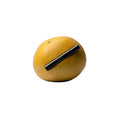Riise: Fruity, Floral And… Made From FossilFuels? What’s Really In Your Favourite Fragrance

Here’s an uncomfortable truth: that perfume or fragrance you wear all the time (you know, the fruity or floral one that everyone compliments you on) likely contains ingredients made from petrochemicals.
Don’t feel bad if you didn’t realise – most popular perfumes, colognes and body sprays do. There are around 4,000 chemicals currently used to scent products and more than 95 per cent of the chemicals in synthetic fragrances are derived from petrochemicals. As the Environmental Working Group (EWG) reports in its research into the chemicals in fragrances, a rose may be a rose, but a rose-like fragrance can be concocted from any number of stock chemical ingredients.
Aside from the fact that we’d rather not be wearing the sweet, sweet smell of fossil fuels, some of those chemicals are highly toxic and have been linked to chronic health issues, including cancer.
We could stop this article right here and say: just stop buying perfumes and fragrances. But we do still want to smell good and use fragranced products. So, what’s the solution?
WHAT IS THE DIFFERENCE BETWEEN SYNTHETIC AND NATURAL?
Before we stick our noses too much further down this rabbit hole, let’s refresh what these terms actually mean. Synthetic fragrances are essentially man-made replicas of scents that do (and sometimes don’t) occur in nature. Some synthetic scents are made entirely from petroleum by-products while others are created from a combination of synthetic chemicals and natural ingredients. Synthetic fragrances can also be created to be “nature-identical”, which means they use “the same chemical formula or atomical structure as the natural extract”.
Natural perfume is derived from natural properties. The ingredients include a combination of natural extracts, natural alcohol or plant oil, water and sometimes a natural antioxidant to maintain shelf life. (Feel free to turn this into a drinking game and take a shot of natural wine every time you read the word “natural”.) Buying a natural (there we go again) perfume or fragrance feels like the obvious solution. But even products that are marketed as natural can still contain harmful synthetic ingredients and petroleum derivatives. So you really need to look at the ingredients carefully.
STEERING AWAY FROM PETROLEUM-BASED SYNTHETICS AND LOOKING TOWARDS NATURAL ALTERNATIVES
If the idea of spraying yourself with a product that contains fossil fuels and potentially harmful chemicals is giving you the ick, it might be time to consider an all-natural approach.
Melbourne-based fragrance house Váhy is one of the few brands we found that make products using 100 per cent natural ingredients. Co-founder Kate Macdonald explains that the brand has a long list of ingredients it does not work with, including two of the most common ingredients in commercial fragrances: denatured alcohol and synthetic fragrance.
“We wanted to give people an alternative to commercial synthetic fragrances which are made without harmful chemicals, without animal by-products and with only pure, natural ingredients,” Macdonald says.
She adds that transparency (which we define as how much visibility a brand has over its supply chain and how openly it’s communicating that) is the biggest thing to look out for when buying any perfume or fragrance product – whether natural or synthetic. “We are of the view that natural is best but this must be paired with ingredient transparency…we disclose the ingredients in our scents so our customers can make their own informed decisions about what they want to put on their bodies.”
A CASE FOR SYNTHETICS
Not every brand is of the view that the use of all synthetics is bad though. Some argue that a mixture of “safe” synthetics (i.e. those made from nature-identical ingredients that have been approved by the IFRA) and natural ingredients is the best approach. (The IFRA is an independent regulatory body that performs toxicological research into the safety of fragrance ingredients.)
This is generally because of the resources needed to produce natural fragrance oils. It requires massive yields of plants and flowers, which can’t always be sustainably produced and harvested.
CHOOSING THE RIGHT FRAGRANCE FOR YOU
Understandably, you might be confused at this point about what kind of fragrance you should buy. A simple place to start is with your values, asking questions about what’s important to you in a fragrance product. Are you trying to avoid any product with fossil fuel derivatives? Are you concerned about the potential health effects of synthetic chemicals? Would you like to know more about where the ingredients are sourced or how the product is made? Do you only want to wear something that is vegan or made from 100 per cent natural ingredients?
The ability to ask questions (and have them answered) is why transparency is important. The more information a brand gives about what’s in its products and how they were made, the more informed decisions individuals can make before purchasing. Both of the fragrance brands listed on RIISE Shop – Váhy and ROEMY – value transparency and extensively list the ingredients they avoid in their fragrances, including information about why they are harmful.
“We strongly recommend that people exclusively choose brands that disclose the ingredients in their blends and do not use ambiguous or vague terms like ‘parfum’, ‘fragrance’ or ‘denatured alcohol’ [on their ingredients list],” Macdonald adds.
Obviously, ingredients are a big factor in deciding what kind of perfume to buy. But don’t forget to look at a brand’s ethos too. Váhy gives careful consideration to the formulations of its products, while working towards lowering their overall environmental impact. For us, that’s just as important as finding something that is 100 per cent natural or petrochemical-free.


